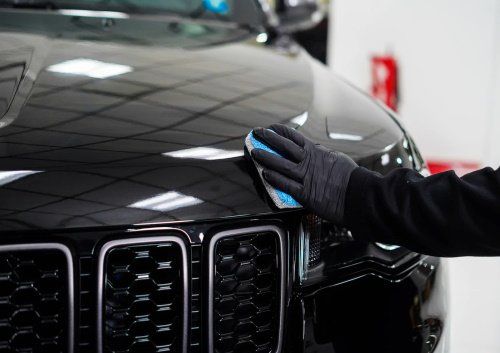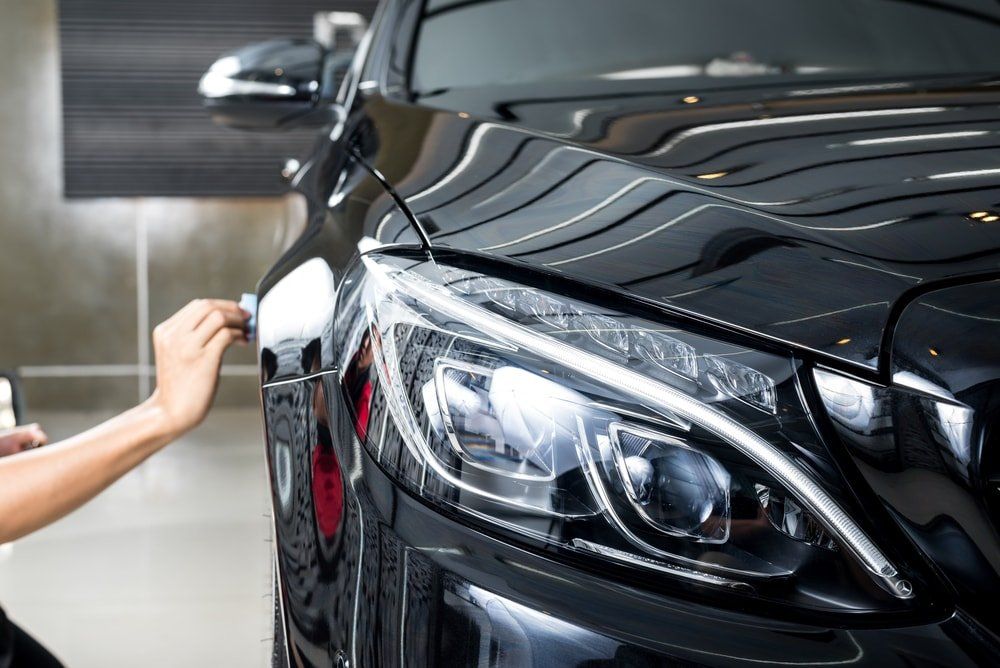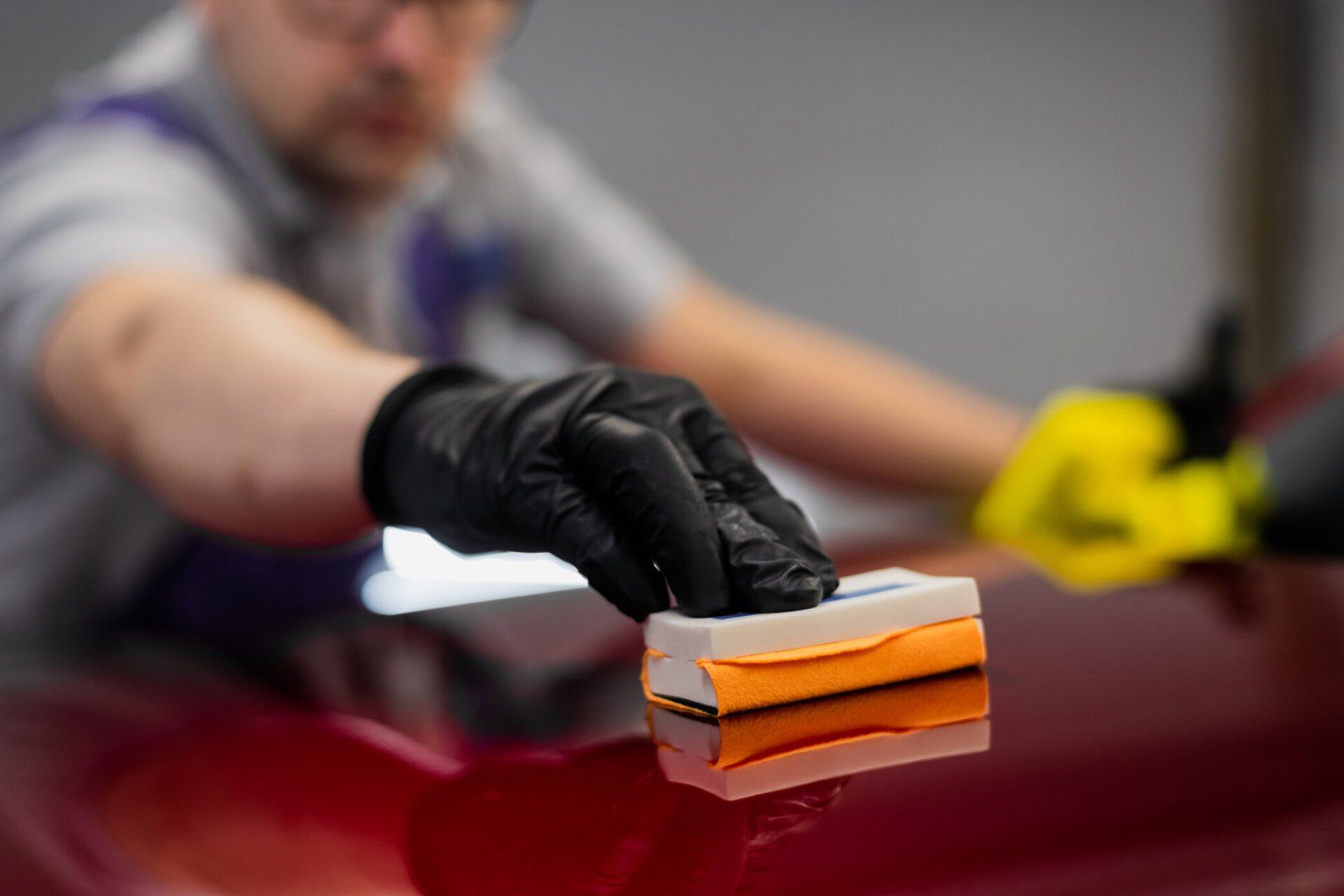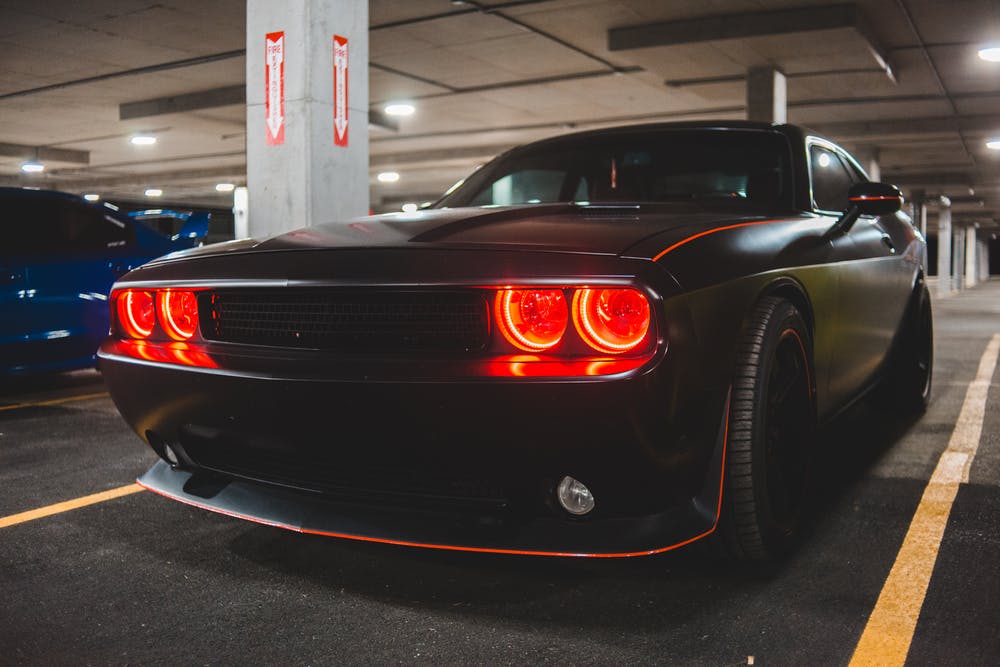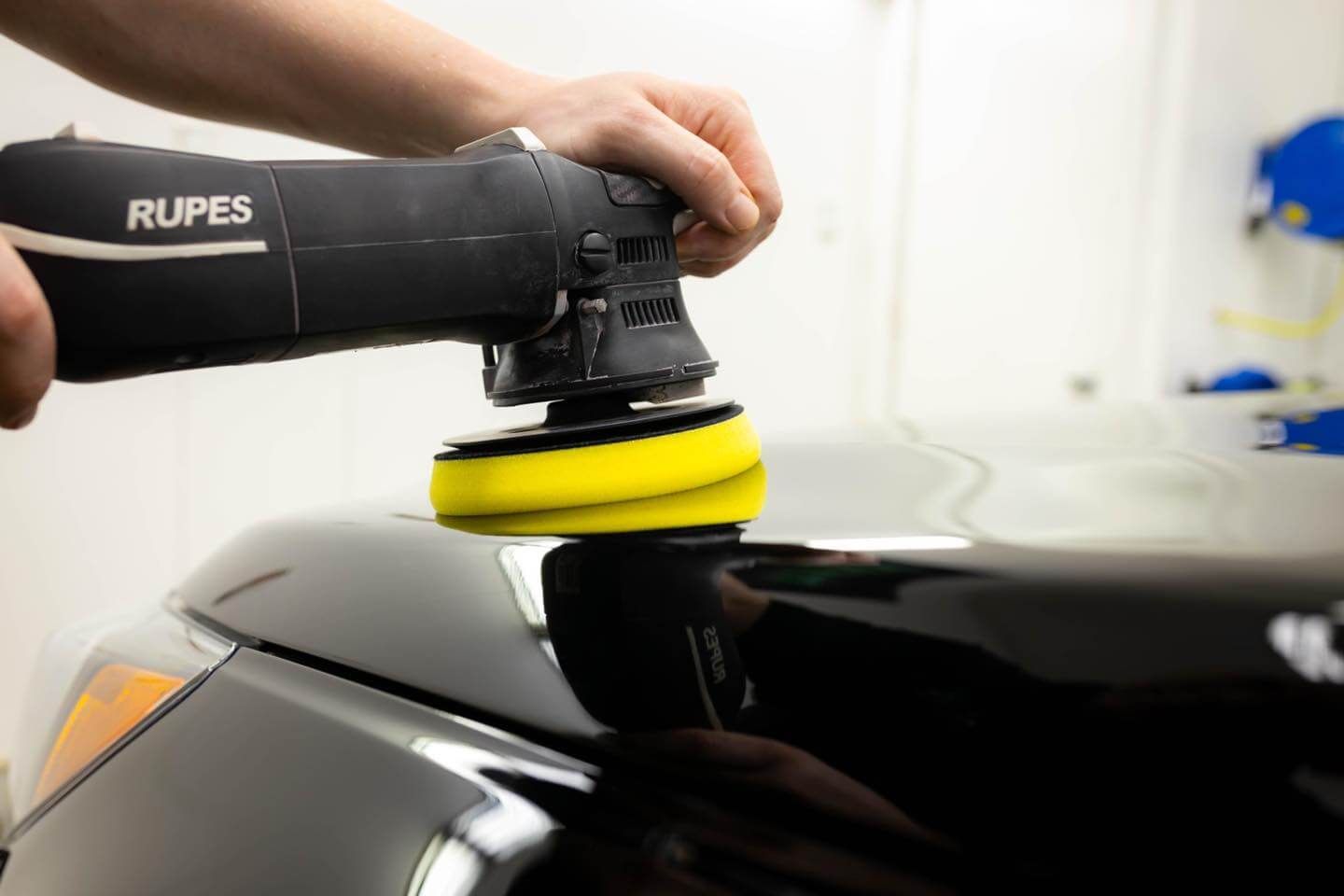The Lifespan of Ceramic Coating: When and How to Reapply for Long-Lasting Protection
BOOK NOWCeramic coating generally endures between 2 and 7 years, with variations stemming from product quality and application method. Consumer ceramics are on the lower lifespan spectrum, offering a year or two of protection, while professional-grade coatings can last up to 7 years. Driving conditions, maintenance practices, and exposure to harsh weather or chemicals influence how long your ceramic coating lasts.
It's generally recommended to consider reapplying ceramic coating to your car every 2 to 5 years, depending on factors such as the type of coating used, maintenance, and environmental conditions. To ensure the best results, consult with a professional detailer who can assess your specific situation and provide tailored recommendations for reapplication.
Expected Life of Ceramic Coating
The lifespan of a ceramic coating heavily depends on the product's quality and maintenance. High-quality, professional-grade ceramic coatings can endure for up to 5 years or more with proper care, ensuring long-lasting protection for your vehicle. Conversely, lower-quality DIY ceramic coatings generally last around 1 to 2 years due to their formulation and application. Environmental factors play a significant role, including exposure to sunlight, harsh weather conditions, and washing frequency. Regular inspection and maintenance are crucial for identifying when reapplication is necessary to ensure continuous protection for your vehicle's exterior.
In addition to quality and environmental factors, the type of ceramic coating used also affects its expected lifespan. Consumer-level ceramics typically last between a year and two. On the other hand, trained, certified, and exclusive detailer-applied ceramics provide an extended lifespan of 3–7 years backed by a warranty, offering reassurance and long-term value for vehicle owners.
In summary, understanding the expected lifespan of ceramic coatings involves considering multiple factors, including product quality, maintenance practices, environmental influences, and the specific type of ceramic coating used. By evaluating these elements, vehicle owners can make informed decisions regarding the selection and care of ceramic coatings to achieve long-lasting protection for their vehicles.
Factors Influencing Coating Performance
The lifespan of ceramic coatings can be significantly influenced by multiple factors, from driving conditions to the type of maintenance applied. In simple terms, while ceramic coatings are tough, they're not invincible. If you reside in an area with extreme weather, like intense heat or coastal regions with salt exposure, the lifespan of your coating is likely to be shorter than average.
On average, the lifespan of ceramic coating in harsh weather conditions, such as extreme heat or exposure to salt, is usually reduced to just 1-3 years, compared to the typical 2–5 years in normal driving conditions. Regular maintenance can extend the lifespan by up to 50%, making it essential to adhere to a consistent cleaning schedule for your vehicle. For instance, just as regular cleaning and upkeep extend your car’s engine's lifetime, consistent care and attention prolong the lifespan of your ceramic coating. This means washing your car frequently with clean water only, using proper washing methods, and avoiding harsh chemicals and intensive polishing.
Moreover, the type and method of application play a crucial role in determining how long your ceramic coating will last. Trained, certified, and exclusive detailer-applied ceramics tend to last longer, typically between 3 and 7 years. These coatings also come with a warranty for added peace of mind. In comparison, consumer-level ceramics generally last for a year or two. When considering ceramic coatings for your vehicle, it’s advisable to consult your auto detailer about the specific product they use to determine the expected lifespan. Take time to understand the differences between various coatings so you can make an informed decision based on your personal needs and driving habits.
Understanding these influential factors is key to making informed decisions about your ceramic coating application and maintenance. It’s all about finding that delicate balance between protection and practicality that suits your specific circumstances.
Timely Reapplication Guidelines
Understanding when to reapply ceramic coating is paramount for preserving the protection and aesthetics of your vehicle. One clear indicator that denotes the necessity for reapplication is the cessation of water beading on the car’s surface, signaling a loss of hydrophobic properties. Typically, this occurs after two to five years, contingent upon the quality of the initial application and its subsequent maintenance. However, several factors can expedite the need for reapplication. For example, if your vehicle regularly contends with extremes such as prolonged exposure to intense sunlight, heavy rain, or snow, the protective layer may degrade more rapidly. Additionally, the use of aggressive cleaning chemicals during car washes can gradually compromise the coating's integrity, thereby necessitating earlier reapplication.
Consider a ceramic coating as a shield that safeguards your car's paintwork from environmental harm. Imagine this shield slowly losing its strength and effectiveness as it battles relentless sun exposure, harsh winters, and powerful cleaning chemicals. It's no surprise that occasional reinforcement is necessary to keep it functioning optimally. Regular monitoring is pivotal in determining the appropriate time for reapplication. By scrutinizing the coating’s performance every six months, you can proactively identify any indications of degradation and plan for a timely refresh. As a quick tip, observing how water behaves on your vehicle is a simple yet effective method to assess the condition of your ceramic coating. If you notice water no longer beads up and rolls off the surface as it once did, it’s likely time to contemplate reapplication.
Assessing Health of Ceramic Protection
Your vehicle's ceramic protection, like any guard, can weaken over time. The key to knowing when to reapply it is to understand how to assess its health. One of the clearest ways to do this is by observing the hydrophobic behavior of the coating. This means checking how the water interacts with the surface. When your car is freshly coated, water should bead and sheet off effortlessly, leaving the surface almost dry. But as time passes, this hydrophobic behavior may deteriorate. If you notice water no longer beading or sheeting off as smoothly as it used to, it's a strong indication that your ceramic coating isn't performing at its best. When the hydrophobic effect weakens, it means the ceramic coating is no longer able to repel water and contaminants effectively, making your car vulnerable to potential damage from environmental factors.
Imagine if your raincoat stopped repelling water and instead left you feeling damp after a walk in the rain; similarly, a compromised ceramic coating doesn't protect your car as it should. Another visual cue to look out for is the appearance of the paint on your car. Over time, you may notice a decrease in glossiness and shine or an increase in staining or dullness on the paintwork. This is a sign that the protective ceramic layer is wearing down and isn't able to preserve the luster of your car as effectively as before. These symptoms point to a diminished quality of the ceramic coating, signaling that it's losing its effectiveness in shielding your vehicle from UV rays, dirt, pollutants, and other hazards that vehicles encounter daily.
Therefore, when you observe these signs—reduced hydrophobicity and compromised surface appearance—it's time to consider scheduling a reapplication of the ceramic protection for your vehicle. Monitoring for these warning signals at regular intervals will help ensure that your vehicle continues to receive the best possible care and protection.
Advantages of Regular Coating Renewal
Regular renewal of your ceramic coating is like giving your car a new lease on life. Beyond ensuring that it looks great, this preventive measure comes with a host of benefits that go beyond just aesthetics.
- Enhanced Vehicle Appearance: When you keep renewing your ceramic coating, you're effectively keeping your car looking brand new; the paint stays glossy, and any scratches remain less visible. This means that when you decide to sell or trade-in your vehicle, its maintained appearance and gloss, contributed by the ceramic coating, will significantly increase its resale value.
- Paint Protection Against Environmental Damage: Regular renewal of the ceramic coating goes the extra mile in safeguarding your car's paint from environmental contaminants and pesky pollutants. The coating acts as a barrier between your car's exterior and harmful elements, ensuring that the paint remains unharmed over time and reducing the risk of surface oxidation and corrosion.
- Simplified Cleaning with Sustained Hydrophobic Effect: The hydrophobic effect isn't just a fancy term; it represents the magic behind how easily water slides off a freshly coated car. With regular coating renewal, this effect doesn't fade away; it stays hard at work for every rain shower or car wash, making cleaning a breeze. Not only does this save you time and effort, but it also makes for an even cleaner finish every time.
In essence, regular renewal of ceramic coating is like hitting the reset button on your vehicle's protection plan—it keeps it looking sharp, shields it from external aggressors, and makes maintenance a walk in the park.
Techniques to Prolong Protection Layer
Maintaining a protective ceramic coating requires a delicate touch. While it provides durable defense against environmental factors, it still benefits from gentle care. Here are some of the top techniques to extend the lifespan of your ceramic coating:
- Gentle washing: When it comes to washing, use clean water and a soft microfiber cloth for cleaning your car. The goal is to remove dirt or grime without damaging the protective layer. Avoid harsh chemicals or rough materials that can wear down the coating. Think of it as giving your car a nice, refreshing bath—gentle and relaxing.
- Avoid machine polishers: It's best to avoid machine polishers when maintaining your ceramic coating, as they can be too aggressive and may inadvertently strip away the protective layer you worked so hard to apply. Instead, opt for hand polishing when necessary. The goal here is to preserve the protective barrier, not destroy it during maintenance.
- Mind the climate: Extreme weather puts stress on your vehicle's exterior and its protective coatings. To extend the life of your ceramic protection, avoid driving in conditions where temperatures are either too high or too low. Both extremes can impact the integrity of the coating. For instance, extreme heat can cause the coating to break down faster, while extreme cold can make the surface more susceptible to damage since it tends to become more rigid.
- Regular Application of Ceramic Booster Spray: Applying a ceramic booster spray every few months goes a long way toward revitalizing your coating's hydrophobic properties. This spray acts as an additional layer of protection, enhancing the longevity of your ceramic coating .A good analogy would be using sunscreen regularly to prolong the life of your skin—it adds extra protection and keeps it healthy over time.
By utilizing these meticulous maintenance practices, you’ll not only prolong the life of your ceramic coating but also ensure that it continues to provide superior protection for your vehicle. Ensuring the longevity of your ceramic coating can greatly enhance the appearance and resilience of your vehicle's paint, ultimately saving you time and money in the long run.
Top-Rated Ceramic Coating Solutions in Pine Island, MN
Are you ready to give your vehicle the protection it deserves? Five Star Automotive Detailing in Pine Island, MN, offers top-tier ceramic coating solutions that stand the test of time. Our expert technicians meticulously apply ceramic coatings, creating an invisible barrier that shields your car's paint from environmental hazards, UV rays, and everyday wear and tear. With our top-rated ceramic coating services, your vehicle will maintain its glossy finish and showroom shine for years to come. Don't settle for subpar protection—choose Five Star Automotive Detailing for unparalleled quality and durability. Schedule your ceramic coating appointment today or call us at 507-213-3561 and experience the difference for yourself!


